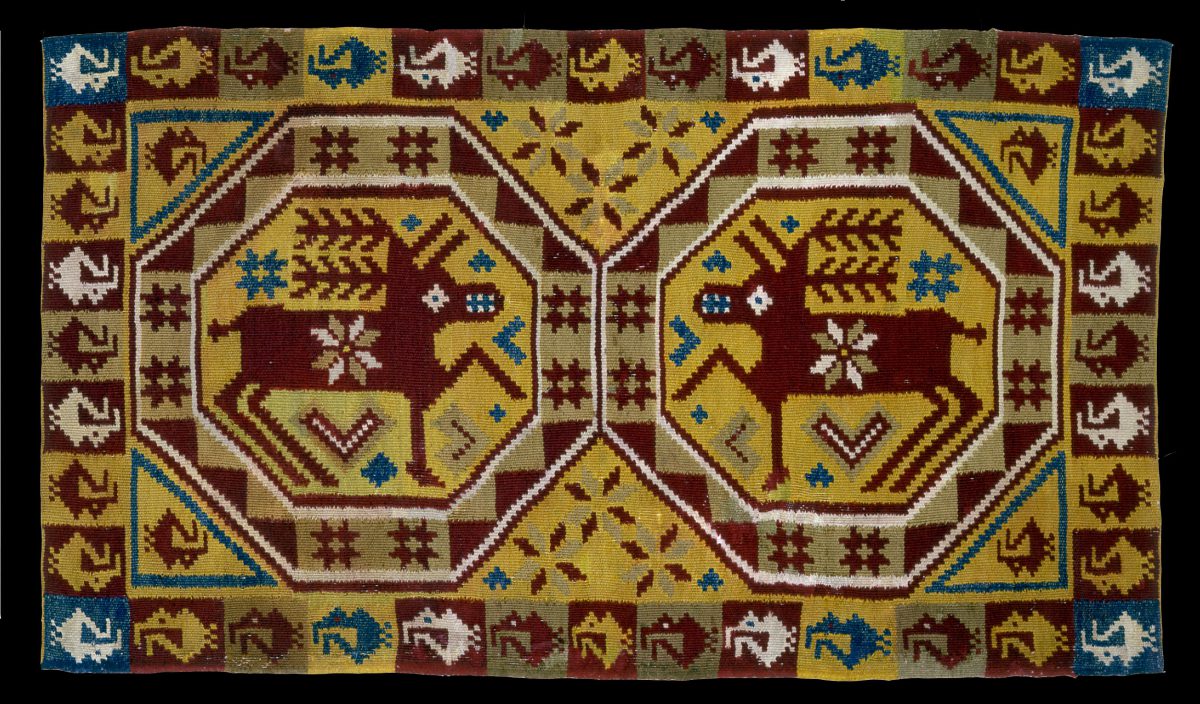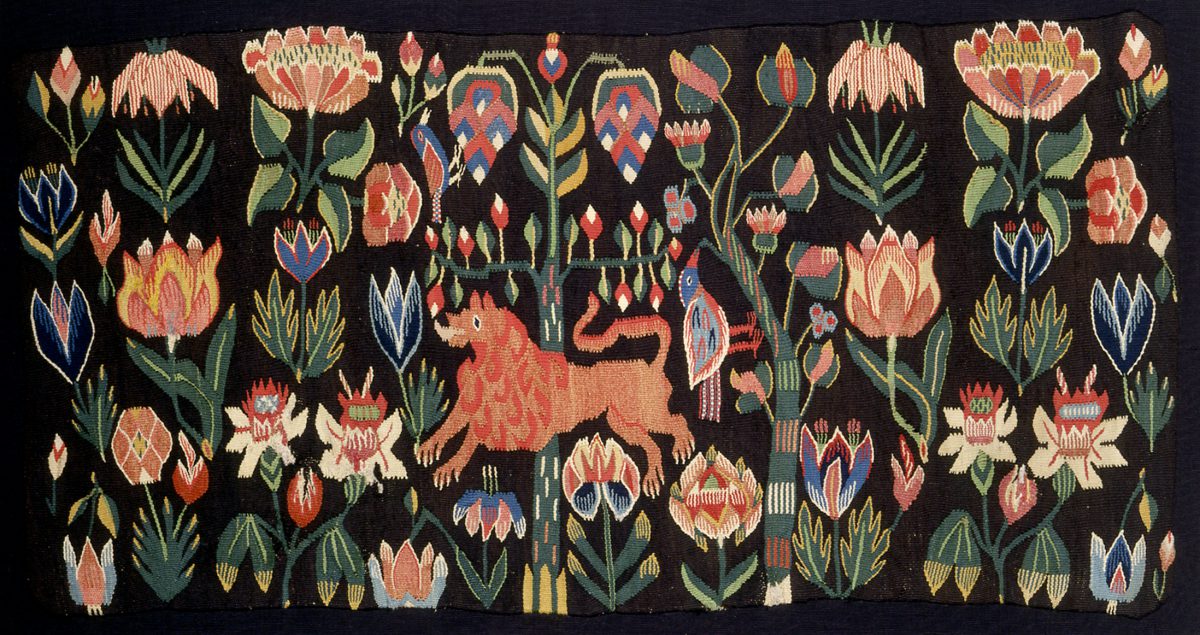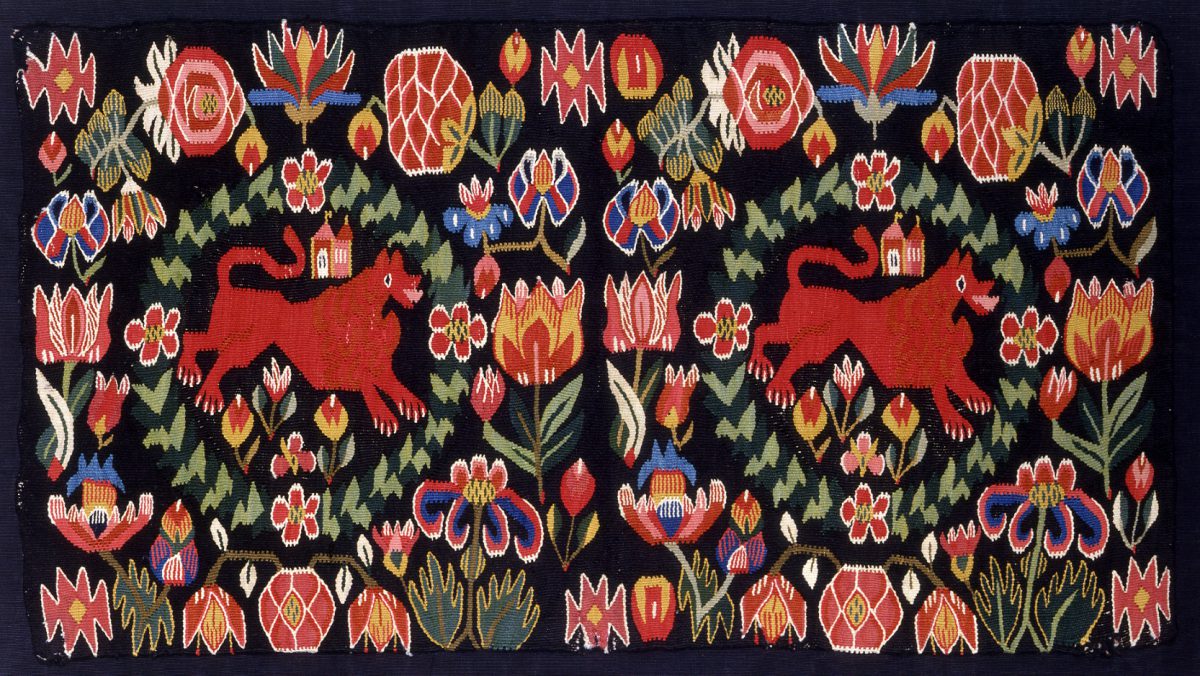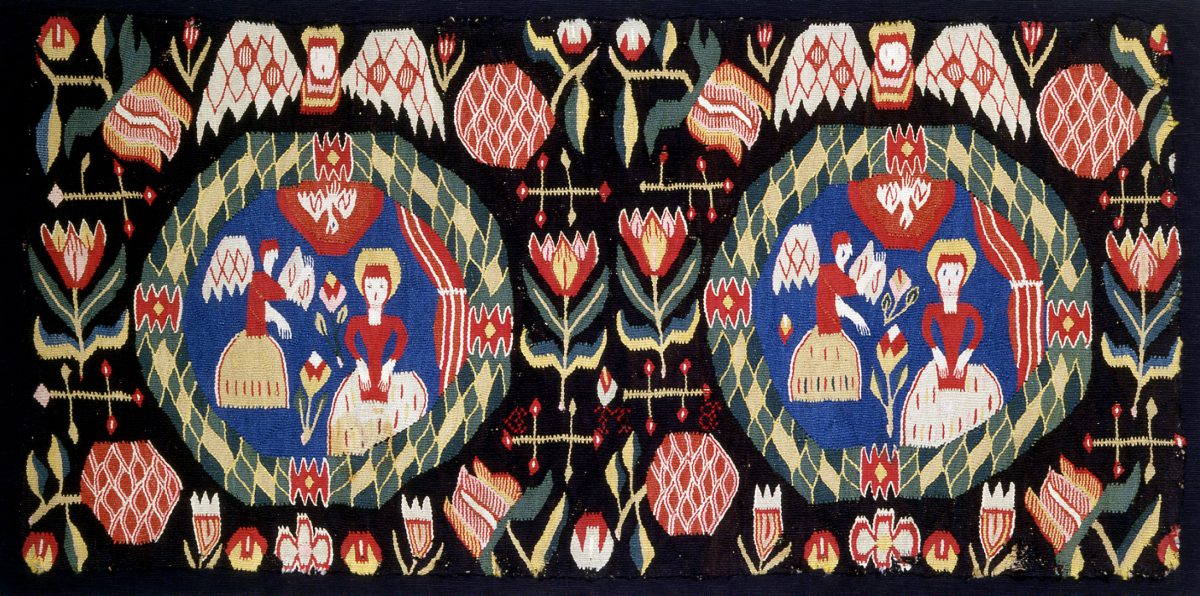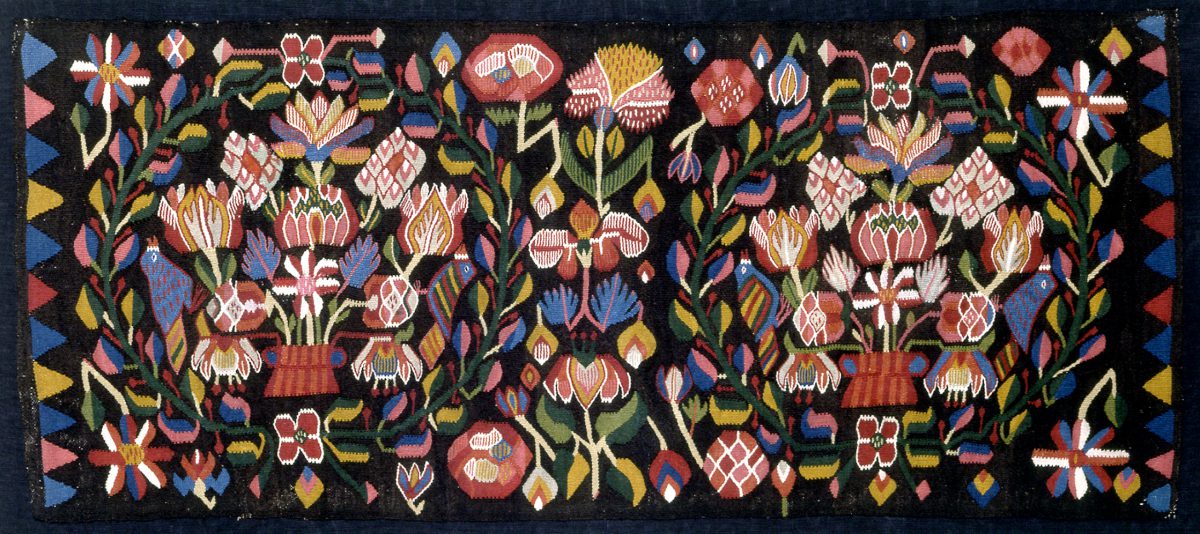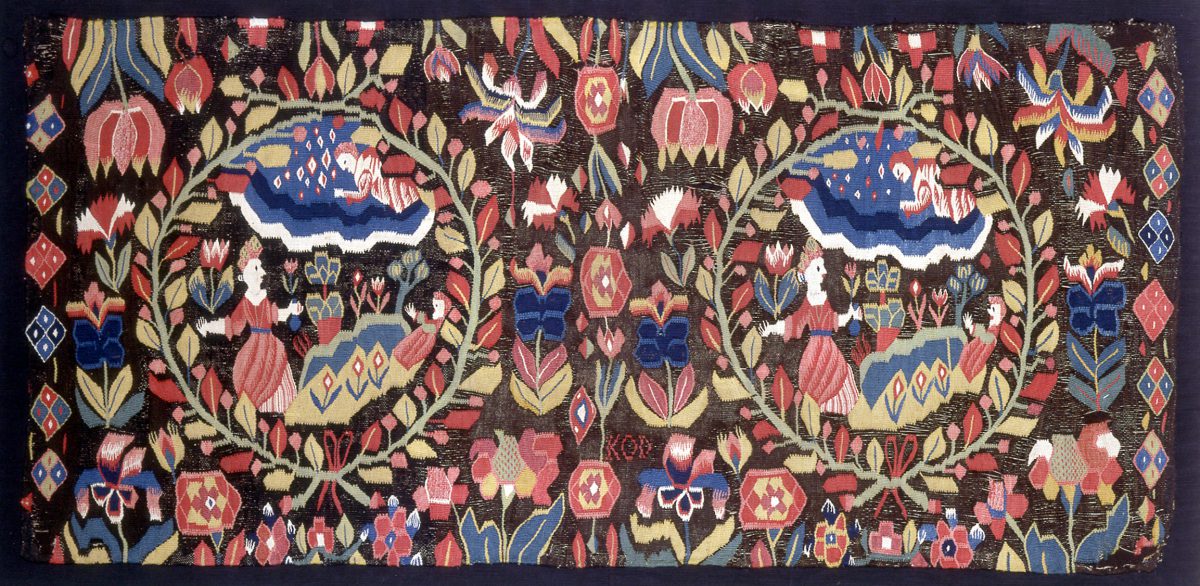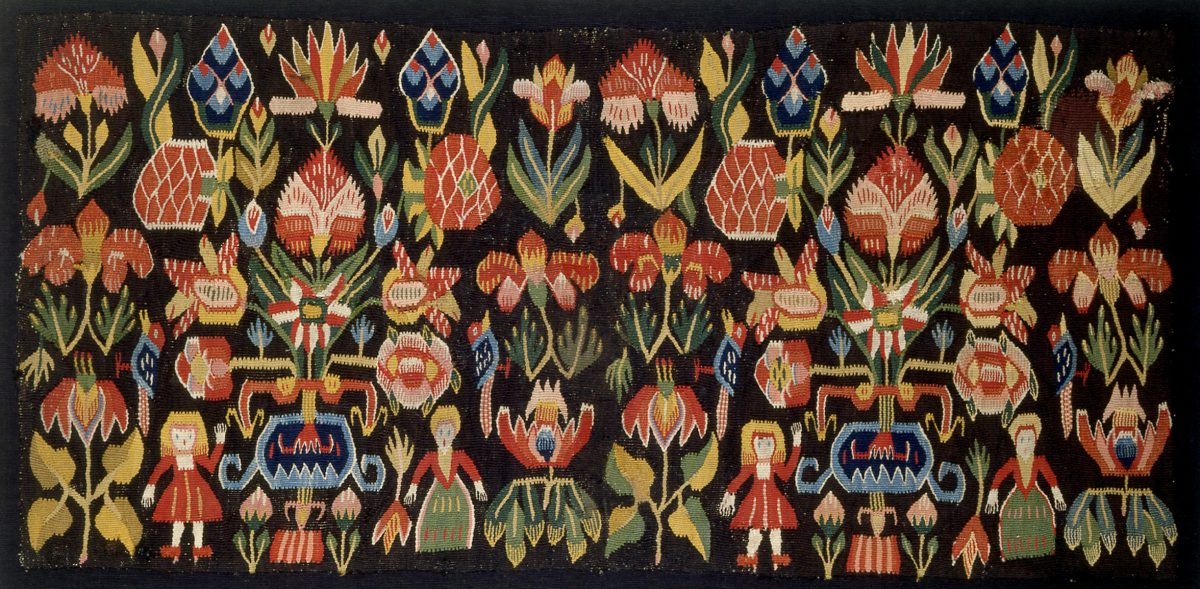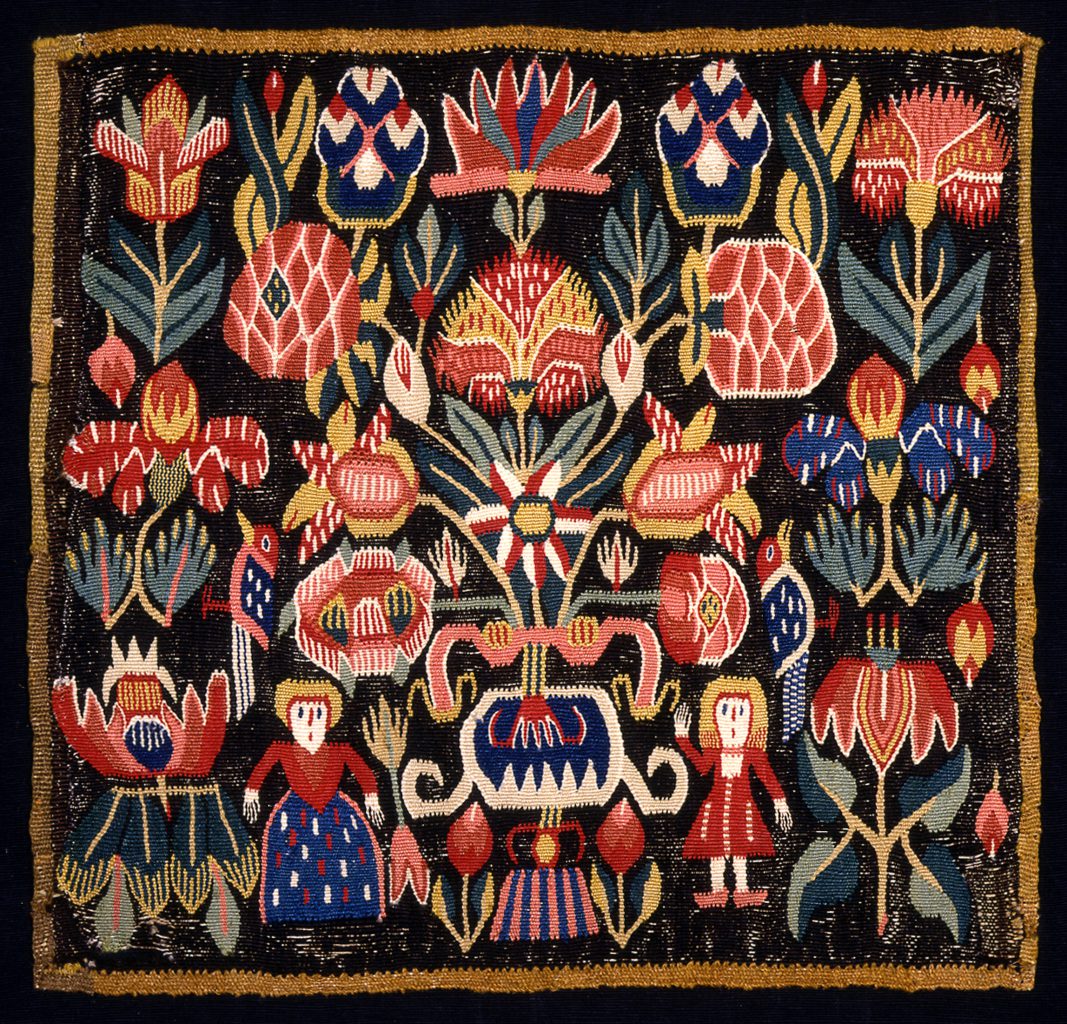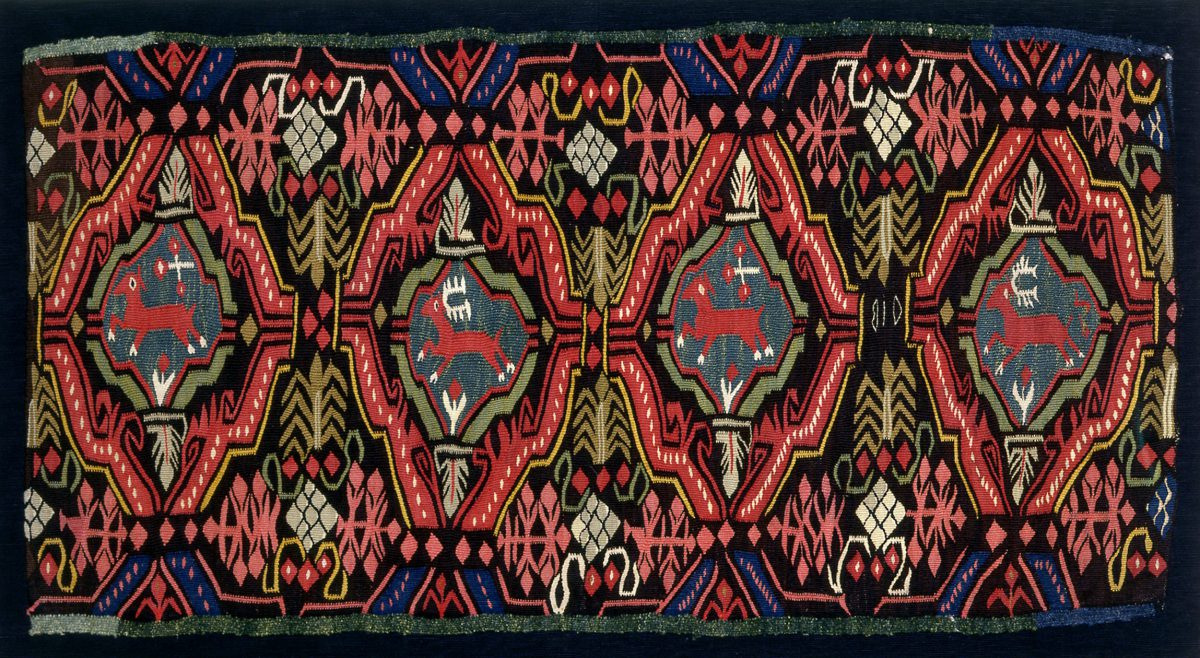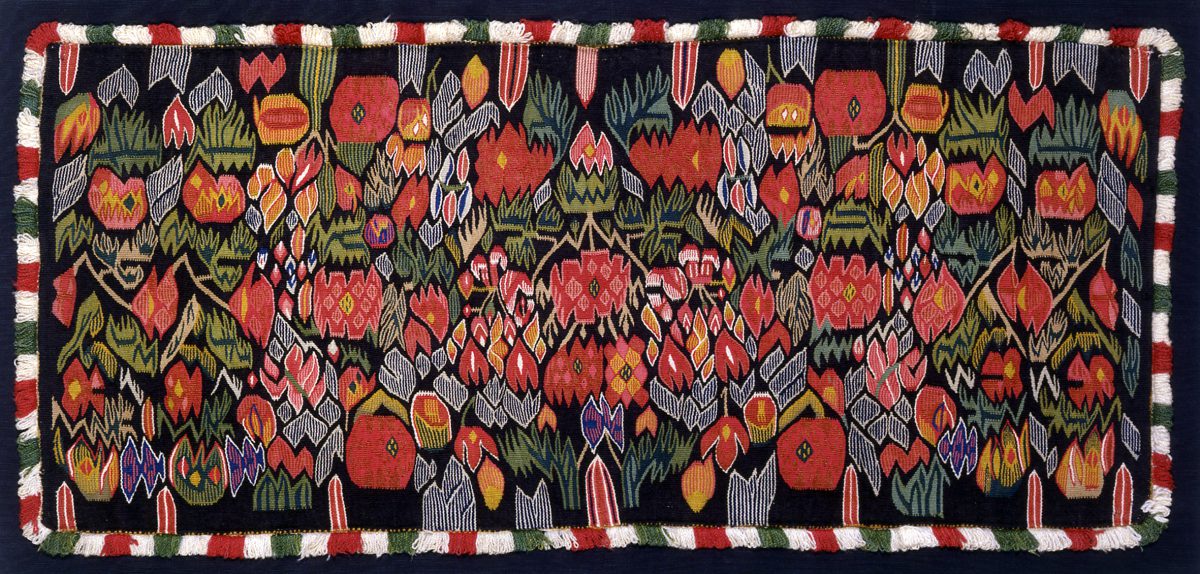-

Carriage Cushion Cover (Two Reindeer in Octagons with Birds)
55.5 x 99 cm
first half of the 19th century Sweden, Scania, Herrestads district
-

Carriage Cushion Cover (Lion in a Tree)
48 x 91 cm
late 18th century Sweden, Scania, Bara district
-

Carriage Cushion Cover (Two Lions in Floral Roundels)
52 x 94.5 cm
late 18th century Sweden, Scania, Bara district
-

Carriage Cushion Cover (The Annunciation)
47 x 97 cm
late 18th century Sweden, Scania, Torna district
-

Carriage Cushion Cover (Floral Wreaths with Facing Birds)
49.5 x 113.5 cm
late 18th century Sweden, Scania, Torna district
-

Carriage Cushion Cover (The Annunciation)
53 x 110 cm
first half of the 18th century Sweden, Scania, Torna district
-

Carriage Cushion Cover (Vases of Flowers with People)
47 x 97 cm
late 18th century Sweden, Scania, Torna district
-

Seat Cushion Covers (Vases of Flowers with People)
50 x 52.5 cm and 51.5 x 51.5 cm
late 18th century Sweden, Scania, Torna district
-

Carriage Cushion Cover (Lattice with Reindeer in Medallions)
53 x 102 cm
circa 1800 Sweden, Scania, Torna district
-

Carriage Cushion Cover (Floral Mosaic)
52 x 115 cm
circa 1800 Sweden, Scania, Torna district
Swedish Textiles (1700 – 1900)
For almost 100 years from the middle of the 18th century, a little-known and very beautiful art flourished in Scania, the southernmost region of Sweden. This was expressed in small textile panels that were mostly made for wedding ceremonies. While these textiles were functional in that they were an essential part of the ceremony, they were also made in order to demonstrate the artistry and skill of the weaver. Their designs were o en symbolic of fertility and long life, and a sense of hope and joy can clearly be seen in these objects. Their extraordinary patterns are not only of interest to collectors, connoisseurs and contemporary weavers, but also represent a comprehensive design source, foreseeing many modern aesthetic concerns and contemporary visual language.

